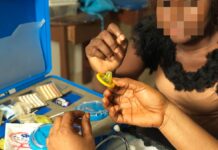Contraception involves intentionally preventing pregnancy from occurring as a result of sexual intercourse by using different methods or techniques. The different methods of contraception act at different stages in the process of ovulation, fertilisation and implantation to prevent a woman from getting pregnant.
Contraception is USUALLY USED INTERCHANGEABLY WITH family planning, AS WELL AS, birth control; BUT THEY DO NOT MEAN THE EXACT SAME THING.
The contraceptive methods may be applied or used by the man or the woman. Some of the methods are temporary and reversible; while others are permanent and irreversible. Some methods are long-acting, while others are not.
Types of Contraception
There are different types of contraception. They are:
- Combined oral contraceptive pills:

Also called “the pill”. This is one of the most commonly used birth control methods. These are pills that contain 2 hormones – estrogen and progestogen.
2. Progestogen-only pills:
Also called “the mini pill”. This is also another very commonly used contraceptive method. These pills contain only progestogen; they do not contain estrogen.
3. Female condoms:
This is a barrier contraceptive method that is applied by the female. Female condoms are made of thin and flexible plastic (polyurethane). Apart from preventing pregnancy, they also prevent transmission of sexually transmitted infections (STIs).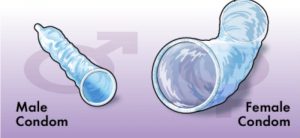
4. Male condoms:
They are thought to be, perhaps, the most commonly used contraceptive method. These are usually made of latex, and can also be made of polyurethane, as well as lamb skin. In addition to preventing pregnancy, they prevent STIs (except lambskin condoms which do not prevent STIs).
5. Cervical diaphragms:
A form of barrier method that is applied by the female (inside the vagina). They are latex 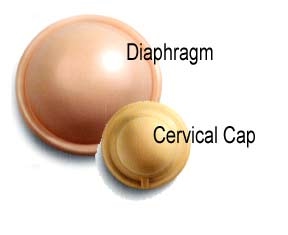 or rubber flexible cups that are shallow. Cervical diaphragms are best used with spermicides.
or rubber flexible cups that are shallow. Cervical diaphragms are best used with spermicides.
6. Cervical caps:
They are thin, silicone, thimble-shaped cups that are like diaphragms but are smaller and less flexible. Also a form of barrier method inserted into the woman’s vagina.
7. Contraceptive sponges: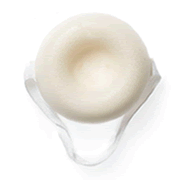
They are foam sponges that are full of spermicides. They are soft and disposable, and are put inside the vagina.
8. Injectables:
These are hormonal contraceptives that are given by
injection every 2 or 3 months depending on the type. They may contain only progestogen or both progestogens and estrogen. Examples are depot medroxyprogesterone acetate (Depo-provera) and norethisterone enanthate (Noresiterat).
9. Implants:
These are small rods made of plastic or silicone rubber. They are placed beneath the skin of the woman’s upper arm. And they usually contain hormones (usually a progestogen) which is gradually released over the years.
10. Vaginal rings: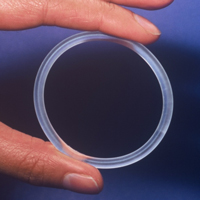
Are transparent, thin and flexible rings that are usually made of plastic. They contain both estrogen and progestogen hormones which are released gradually after insertion into the woman’s vagina.
11. Contraceptive patches: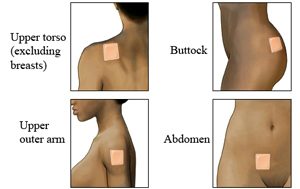
These are small, thin plastic patches. Contraceptive patches contain estrogen and progestogen. They are placed on the woman’s skin to which they stick and release the hormones.
12. Intrauterine devices (IUDs):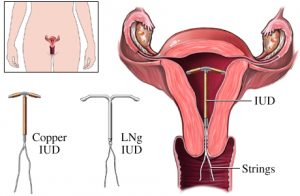
They are small devices that are placed inside the woman’s womb or uterus. Some are made of copper, and others contain hormones (levonorgestrel) which they release gradually. They are long-acting and reversible.
13. Withdrawal method (also called coitus interruptus):
This is a traditional method of contraception. And it involves the man withdrawing his penis from the woman’s vagina before he ejaculates, with the aim of preventing semen from getting inside or around the vagina so as to prevent pregnancy.
14. Standard Days method:
Is a fertility awareness-based method. It involves a woman tracking her fertile period – that is, the days when she can get pregnant if she has unprotected sexual intercourse. This is done based on her menstrual cycle. The fertile period is usually between days 8 and 19 in a 26 to 32 day cycle. Cycle beads can be used to help her monitor the days of her menstrual cycle. So, the woman avoids unprotected sexual intercourse during that period.
15. Two-day method:
Is also a fertility awareness-based method. It also involves pin-pointing the woman’s fertile period and it is based on presence or absence of cervical mucus. This method uses cervical mucus as a sign of fertility.
16. Billings method:
Is also called the cervical mucus method, as well as the ovulation method. It is a fertility awareness-based method, hence a natural family planning method. It involves observing the cervical mucus throughout the menstrual cycle for any changes (in thickness, consistency, colour).
17. Basal body temperature (BBT) method:
Is another fertility awareness-based method which is a type of natural family planning. It involves measuring the woman’s body temperature when she is relaxed. It is measured every morning at the same time before she gets out of bed. This is done so as to be able to identify an increase in the BBT of 0.2-0.5 ‘C which indicates ovulation. With this knowledge, pregnancy is prevented by avoiding unprotected sexual intercourse during her fertile days.
18. Calendar (or rhythm) method:
In this method, the woman, first of all, monitors and records her menstrual cycle for at least 6 months. She then subtracts 18 from the shortest menstrual cycle she has recorded; this gives the estimated first day of her fertile period. And subtracts 11 from the longest menstrual cycle recorded; this gives the estimated last day of her fertile period.
19. Lactational amenorrhea:
This is a natural form of birth control and is temporary. It is based on exclusive breastfeeding. Lactation usually causes an absence of menstruation (amenorrhea), thereby inhibiting the woman’s fertility. And so this method is based on this knowledge. It can be used in the first six months after birth.
20. Symptothermal method:
Is a fertility awareness based method. And it involves monitoring texture of the cervical mucus, firmness of the cervix and body temperature. The changes are used as a sign of the fertile period. And the woman avoids unprotected sex so as to prevent pregnancy.
21. Female sterilisation:
It usually involves tubal ligation. This is mostly a permanent form of birth control. And it involves 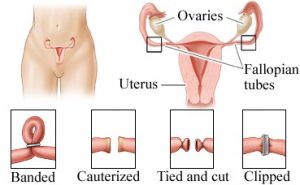 a surgical procedure or operation where the woman’s fallopian tubes are tied, sealed, blocked or cut. This results in eggs (ova) not being able to travel to the womb, and the sperm not being able to reach and fertilise the eggs. In other words, the egg and sperm cannot meet – so fertilisation cannot occur.
a surgical procedure or operation where the woman’s fallopian tubes are tied, sealed, blocked or cut. This results in eggs (ova) not being able to travel to the womb, and the sperm not being able to reach and fertilise the eggs. In other words, the egg and sperm cannot meet – so fertilisation cannot occur.
22. Male sterilisation:
Vasectomy is the name of the procedure that is carried out to sterilise men. It is a surgical procedure or operation in which the vas deferens are tied, blocked, cut or sealed. The aim of this method is to prevent the man’s sperm from travelling through the vas deferens and coming out of his penis. It is a permanent birth control method.
23. Emergency contraception:
This involves the use of pills or intrauterine device to prevent pregnancy after unprotected sexual intercourse has occurred. They are used within 3 to 5 days of unprotected sexual intercourse depending on the type of emergency contraception being used.
The permanent contraceptive methods are male and female sterilisation, while the others are temporary contraceptive methods.
These different types of contraception are categorised into different classes – Hormonal contraceptive methods (combined hormonal methods and progestogen-only hormonal methods), Barrier methods, Emergency contraception, Intrauterine methods, and Sterilisation.

